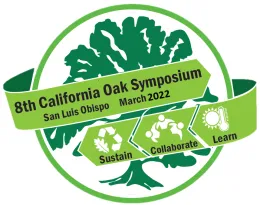#17

Ranchers and Land Managers Responses to an Oak Survey
Devii R. Rao, University of California Cooperative Extension, 3228 Southside Road, Hollister, CA 95023; 831-637-5346; drorao@ucanr.edu
Julie Finzel, University of California Cooperative Extension and Rebecca Ozeran, University of California Cooperative Extension
Livestock and Natural Resources Advisors from the University of California Cooperative Extension conducted a survey to identify the highest priority research needs for people managing California oak landscapes. The survey was conducted primarily on the Central Coast and Central Valley, though forty-nine people from twenty-three counties responded to the survey. Respondents identified as follows: rancher (22), agency staff (9), academic (2), consultant (2), other (11), and unidentified (9). Some people chose more than one category.
The survey asked seven questions, including a question about the importance of oaks. Four common responses were that oaks are important because they provide habitat, shade, beauty, and other ecosystem services. When asked which of three pre-defined topics were most important, 28 people wanted to know how to prevent their oaks from dying; 27 wanted to understand how to increase the number of oaks on their properties; and 18 wanted to know why their oaks are dying.
Many questions still need to be answered to help ranchers and other land managers across the state care for our oak ecosystems. Information on invasive species in oak woodlands was the most requested topic, followed by ecological site descriptions, carbon dynamics and climate change in oak woodlands. One outcome from this survey is that we recently deployed a new research project to investigate blue oak phenology, vigor, and mortality. Based on results from this survey, additional high priority activities include 1) working with the Natural Resources Conservation Service (NRCS) to develop ecological site descriptions in oak woodland and oak savanna landscapes and 2) ensuring managers are aware of the extensive oak-related research that was conducted over the years through the Integrated Hardwood Range Management Program.
